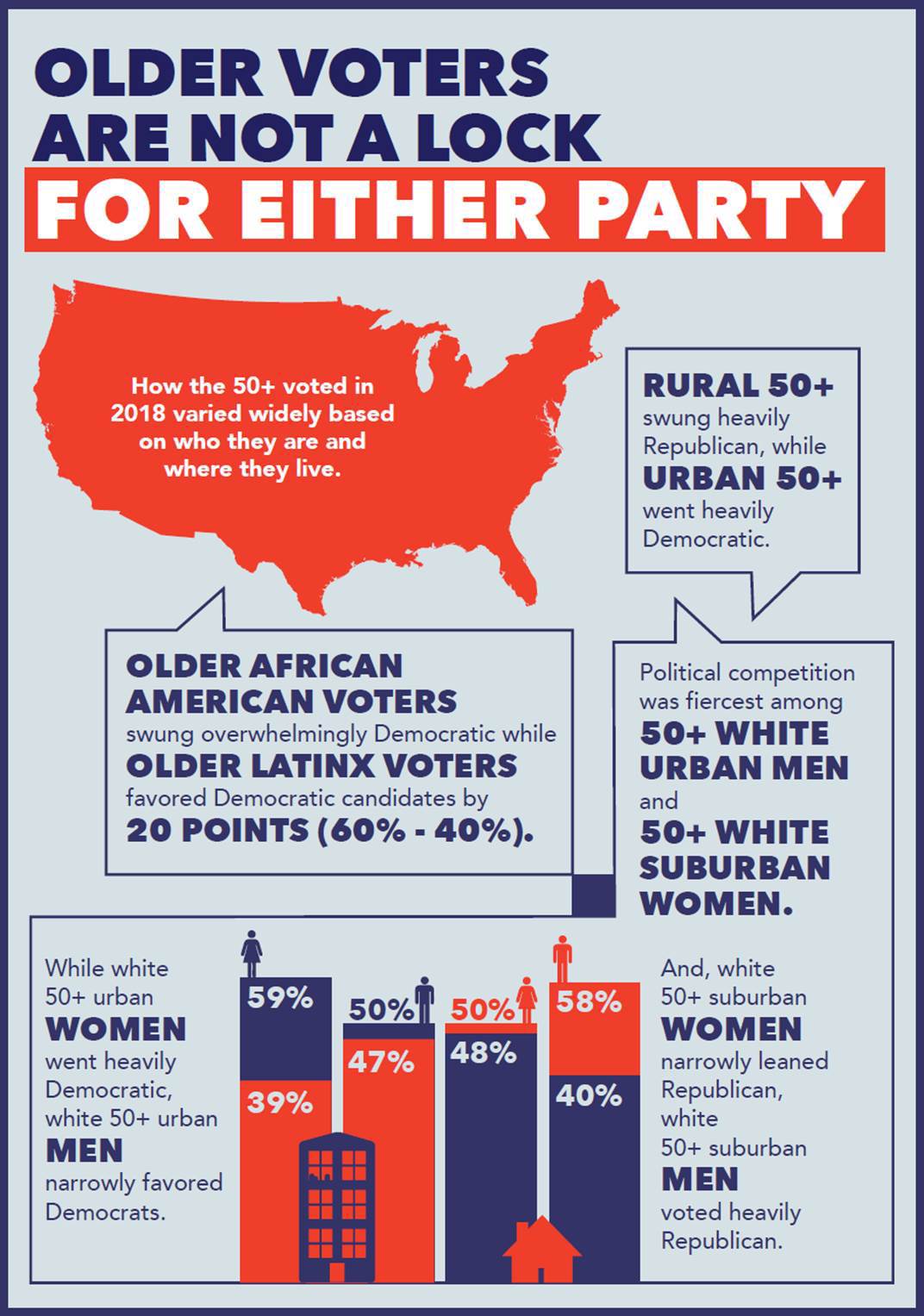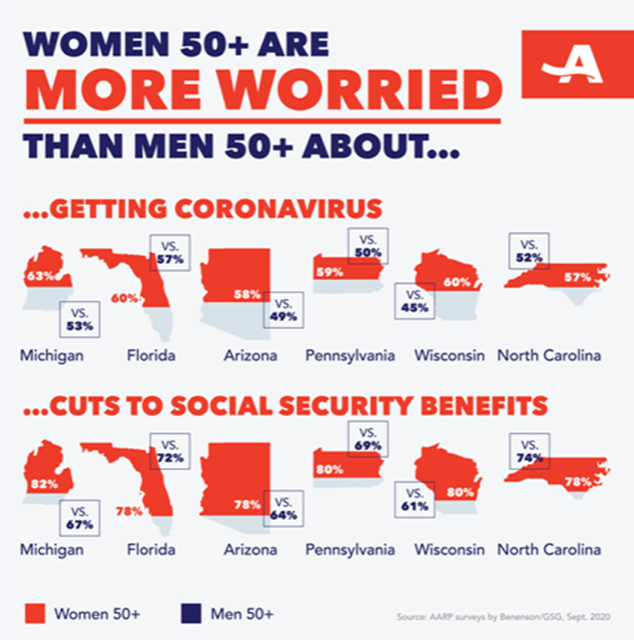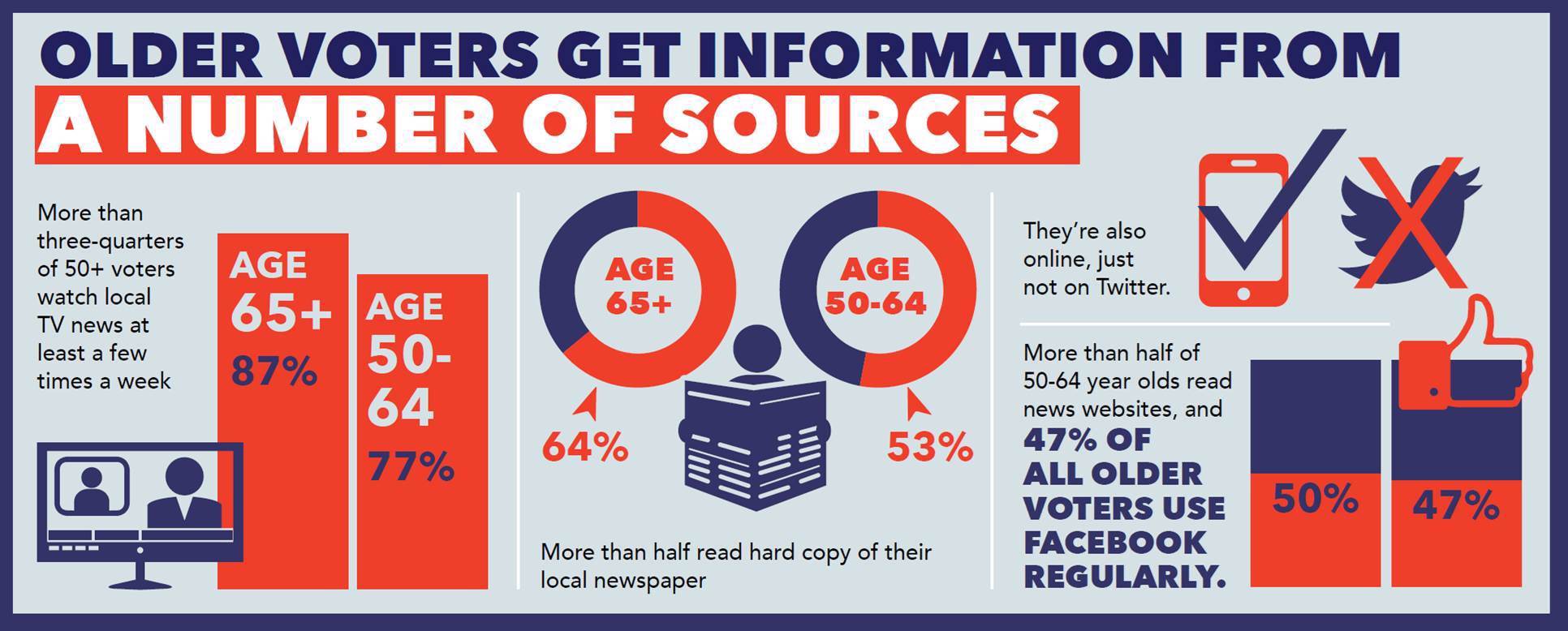 |
For immediate release: October 16, 2020
Contact: [email protected]
LeaMond Discusses Impact of Older Americans on this Year’s Campaign
“There are a lot of them, and in election after election, they show up.”
WASHINGTON, DC — With less than three weeks to go in this year’s campaign, The Ripon Society held a virtual meeting yesterday with Nancy LeaMond, who serves as the Executive Vice President and Chief Advocacy & Engagement Officer for AARP and delivered a presentation about the critical impact that older Americans will have on the election.
“It's not an understatement to say that 50-plus voters are a crucial voting bloc,” LeaMond stated. “There are a lot of them, and in election after election, they show up. There are more than 115 million Americans over 50 representing 45% of the voting age population, but they regularly make up more than half of the electorate. In 2016, a little more than 53% of folks who cast ballots were over the age of 50.
“Importantly, they make up an even larger share of the electorate in key battleground states, ranging from 55.6% in Pennsylvania to almost 60% in Florida. That said, 50-plus voters are not a monolith, and they're not a lock for either party. In 2016, 50-plus voters swung for President Trump by around seven points. In 2018, this same voting bloc powered the Democratic takeover of the House.”
With recent news reports indicating that senior voters may be throwing their support behind Joe Biden, LeaMond noted that it would be the first time since the 2000 general election for that to occur.
“They haven't generated majority support for a Democratic presidential nominee in 20 years,” she stated, “with Al Gore being the last Presidential nominee on the Democratic side to win the older vote.”
 |
LeaMond also discussed the first presidential debate and President Trump’s subsequent COVID diagnosis, and whether she thought either event served to shift senior support even more in the Democrats’ direction.
“The answer is maybe,” she said. “But I can say we've seen things heading in that direction for a while now. Before the debate in early September, AARP fielded surveys in six Presidential battleground states — Arizona, Florida, North Carolina, Michigan, Pennsylvania, and Wisconsin. And in each one, we found double-digit swings away from President Trump among 65-plus voters compared to 2016.”
“These same surveys found that President Trump is doing better with voters ages 50 to 64.In fact, among 50 to 64-year olds, President Trump was leading in four out of six states. But these numbers still represent a negative shift for the President compared to 2016, though not as dramatic as we see with the 65-plus.”
“The pandemic is clearly the biggest issue on everyone's mind. But these two age groups are experiencing it differently. For Americans age 65 and older, it is primarily a health crisis. They are concerned about getting COVID themselves, and they're worried about their family's health. A significant majority say they are taking precautions like wearing masks. They are also more likely to vote by mail. And while a substantial proportion are concerned about paying the bills, the majority of 65-plus are able to manage financially through the pandemic thanks in large part to Social Security and Medicare.”
“Meanwhile, voters aged 50 to 64-year old lean slightly towards economic concerns, 51% to 49%. And this is driven by 54% of men in this age group who prioritize their personal financial situation. For these voters, coronavirus is both a health crisis and an economic crisis. People have lost their jobs. Their small businesses are struggling. They're more concerned about paying bills and eventually being able to retire.
“To put it simply, voters aged 65 and older are prioritizing health. They're more likely to disapprove of how President Trump is handling the pandemic. They generally have more confidence in Vice President Biden to handle health care. And when it comes to their financial situation, they want candidates to focus on preventing cuts to Social Security and Medicare.
“For voters who are 50 to 64 years old, they're prioritizing the economy by a slim margin. They're also more closely split than those who are 65-plus on how President Trump is handling the pandemic. They are more likely to have confidence in President Trump when it comes to rebuilding the economy.”
LeaMond further noted that a lot of the swing towards Biden in the battleground states is being powered by women age 50 years and older.
“We know that 50-plus women in these states are more worried than older men about getting the virus,” she said.“ Whether they support or oppose how President Trump is handling the virus appears to be driving how they plan to vote. They're also generally and historically the most concerned about healthcare costs. In these states, between half to two-thirds of women ages 50 to 64, worry that they won't be able to afford healthcare in the next year.”
 |
Following her remarks, LeaMond also took a number of questions, including one about the media and how older Americans are getting their news.
“We know they watch TV,” she stated. “They watch the networks and they also watch cable. I don't have the specific numbers in front of me, but Fox is obviously a major destination. They also watch local news. In fact, they watch local news more than anyone else. They also consume other kinds of local news.
“In terms of social media. They are huge users of Facebook. They came to Facebook largely to communicate with their grandchildren and to see pictures of them, and they've stayed there. And Facebook is a very, very effective way of communicating with older Americans. They are not on Twitter, but Twitter is so widely reported on Facebook and in the media that they still know what's on Twitter, at least in terms of what the President says on Twitter. So they are consumers of social media.”
LeaMond added that seniors also use something else that is often forgotten in this age of texting and tweeting — the phone.
 |
“I've really encouraged groups that want to communicate with seniors to think about tele-town halls during COVID,” she stated. “We have done national tele-town halls with a hundred thousand people tuning in. And it's a wonderful way to be able to do some very quick education on topics and reach more and more older Americans that way.”
To view the slide deck that accompanied LeaMond’s presentation to The Ripon Society this past Thursday, please click here.
The Ripon Society is a public policy organization that was founded in 1962 and takes its name from the town where the Republican Party was born in 1854 – Ripon, Wisconsin. One of the main goals of The Ripon Society is to promote the ideas and principles that have made America great and contributed to the GOP’s success. These ideas include keeping our nation secure, keeping taxes low and having a federal government that is smaller, smarter and more accountable to the people.
For more information on The Ripon Society, please visit www.riponsociety.org.